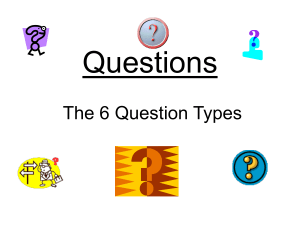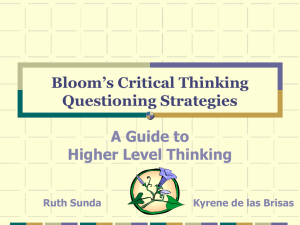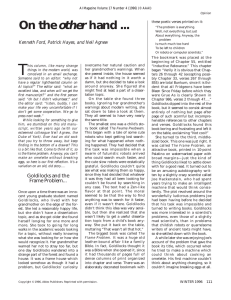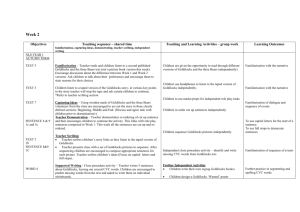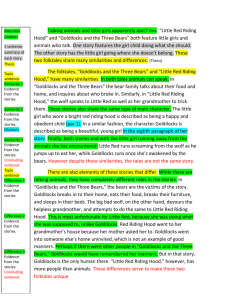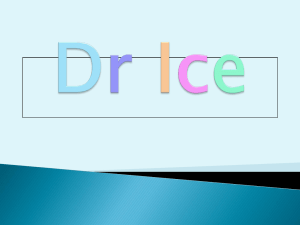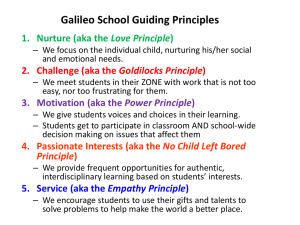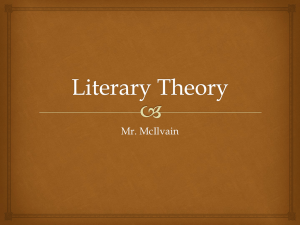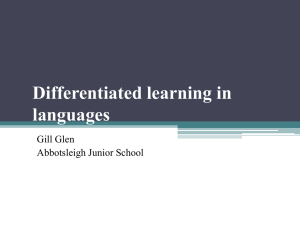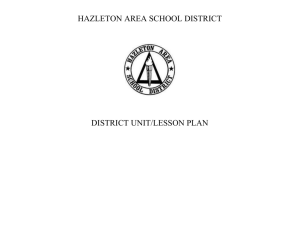Rigorous Questioning Training
advertisement
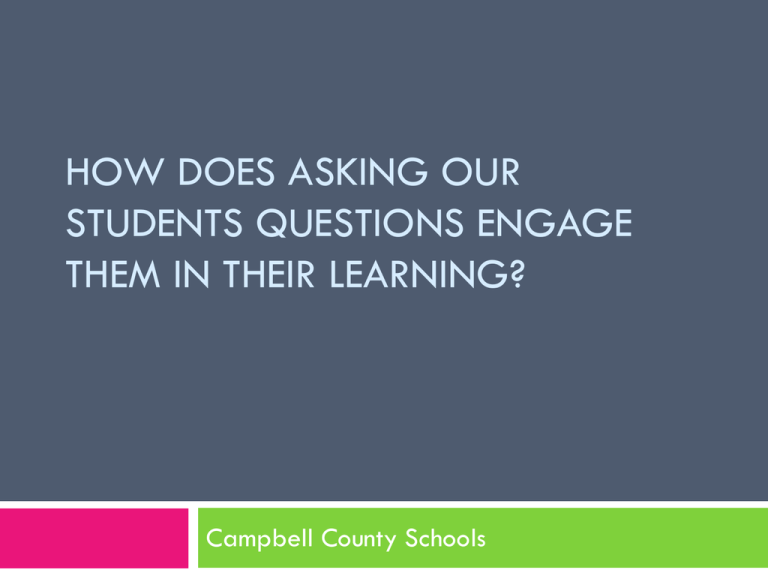
HOW DOES ASKING OUR STUDENTS QUESTIONS ENGAGE THEM IN THEIR LEARNING? Campbell County Schools What, Why, How…. What are you learning? Ask this question after going over the learning target for the lesson. Why are you learning about this? Make a real-world connection with the students so they see how this effects their daily lives. How can I use what I am learning? I can use this concept (math) for adding up my lunch money. (science) for seeing what I need to wear for the day Make connections between content How could we use this concept in another subject? Bloom’s Taxonomy Original Revised Revised Bloom’s Taxonomy Jigsaw Explore the your assigned level of Bloom’s with your team Consider: The definition Verbs for objectives Outcome/product/instructional strategies Model questions What do you think the relationship of student engagement is to each level? Prepare a chart for our gallery walk that represents your level of Bloom’s Remembering: Retrieving, recognizing, and recalling relevant knowledge from long-term memory. Think: How engaging? Understanding: Constructing meaning from oral, written, and graphic messages through interpreting, exemplifying, classifying, summarizing, inferring, comparing, and explaining. Think: How engaging? Applying: Carrying out or using a procedure through executing, or implementing. Think: How engaging? Analyzing: Breaking material into constituent parts, determining how the parts relate to one another and to an overall structure or purpose through differentiating, organizing, and attributing. Think: How engaging? Evaluating: Making judgments based on criteria and standards through checking and critiquing. Think: How engaging? Creating: Putting elements together to form a coherent or functional whole; reorganizing elements into a new pattern or structure through generating, planning, or producing. Think: How engaging? Student Engagement What is the power in these questions? How can these be used in the classroom to enhance student engagement? How often should these questions be asked? What does this do to enhance the learning in the classroom? How can they be part of assessment? How can this add to engagement of the students? How are thinking processes related to language functions ? Which language functions are most engaging? A thinking process becomes a language function when we communicate our thoughts in written or spoken words. Identify the actions in the 2nd column that are language functions – indicate which may be most engaging to students. Goldilocks Example Remember: Describe where Goldilocks lives. ______ lives in ______ which is _______. Understand: Summarize what the Goldilocks story was about. The story was about a ________ who _________. Goldilocks Example Apply: Construct a theory as to why Goldilocks went into the house. I think _____________ because ___________. Goldilocks Example Analyze: Differentiate between how Goldilocks reacted and how you would react in each story event. If I were Goldilocks I would have _____________. Me Goldilocks Example Evaluate: Assess whether or not you think this is a fantasy or a reality. I think this story is __________ because ________. I think this story is __________ because_____. Create: Compose a song, skit, poem, or rap to convey the Goldilocks story in a new form with a modern day theme. Developing Rigorous Questions Powerful Questions, essential questions and smart questions are the foundation for information, engaged learning and informational literacy Five Questions about a title Last Lines How do the questions line up with Blooms? How can those responses be used as a formative assessment? For differentiation? How engaging are these questions for students? Socrates on Questioning Thinking is not driven by answers, but by questions Every intellectual field is born out of a cluster of questions to which answers are either needed or highly desirable Questions define tasks, express problems and delineate issues. Answers signal full stop in thought Only when an answer generates a further question does though continue its life The quality of questions students ask determines the quality of the thinking they are doing No questions=no understanding Superficial questions= superficial understanding What Questions Matter? Why? - requires analysis of cause and effect and the relationship between variables How? - the basis for problem-solving and synthesis Which? - requires thoughtful decision-making Give examples of questions here Examples should be “problem based” – so they can see how the question could walk right into an action/task/project based learning activity…. Does that make sense to you? 1. 2. 3. An essential question that encompasses the entire year An essential question that encompasses one of your instructional units An essential question that can be answered after a lesson Essential Questions Are central to our lives, common to all and contestable Are the heart of the search for truth Probe the deepest issues Are at the center of all the other types of questions Lend themselves to multidisciplinary investigations Answers are not readily found Engage students in real-life problem solving Need to be answered with subsidiary questions What does this look like? Open ended questions Non “yes” or “no” answer possibilities Precise language Include wait time Acknowledge or all responses Response must be non-judgmental or “guess what I’m thinking” – not looking for “pleasing the authority” Paraphrase, not praise Rephrase, not repeat Thinking aloud Think/pair/share Entices more questioning What have you learned? 1. 2. 3. 4. Reflect on what you have learned Blooms levels of questions How questioning strategies lead to thinking and student engagement Essential questions and their uses Incorporating questioning strategies in the classroom
